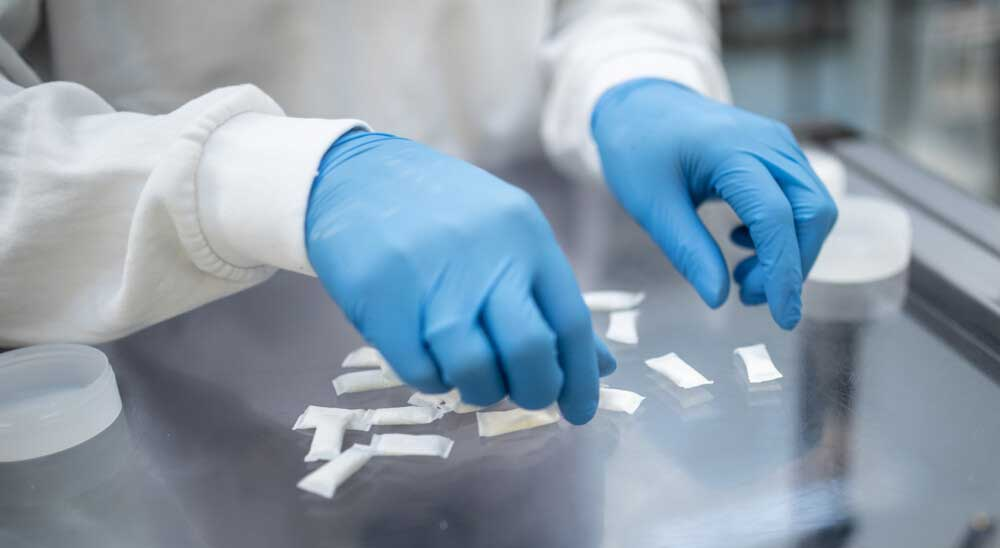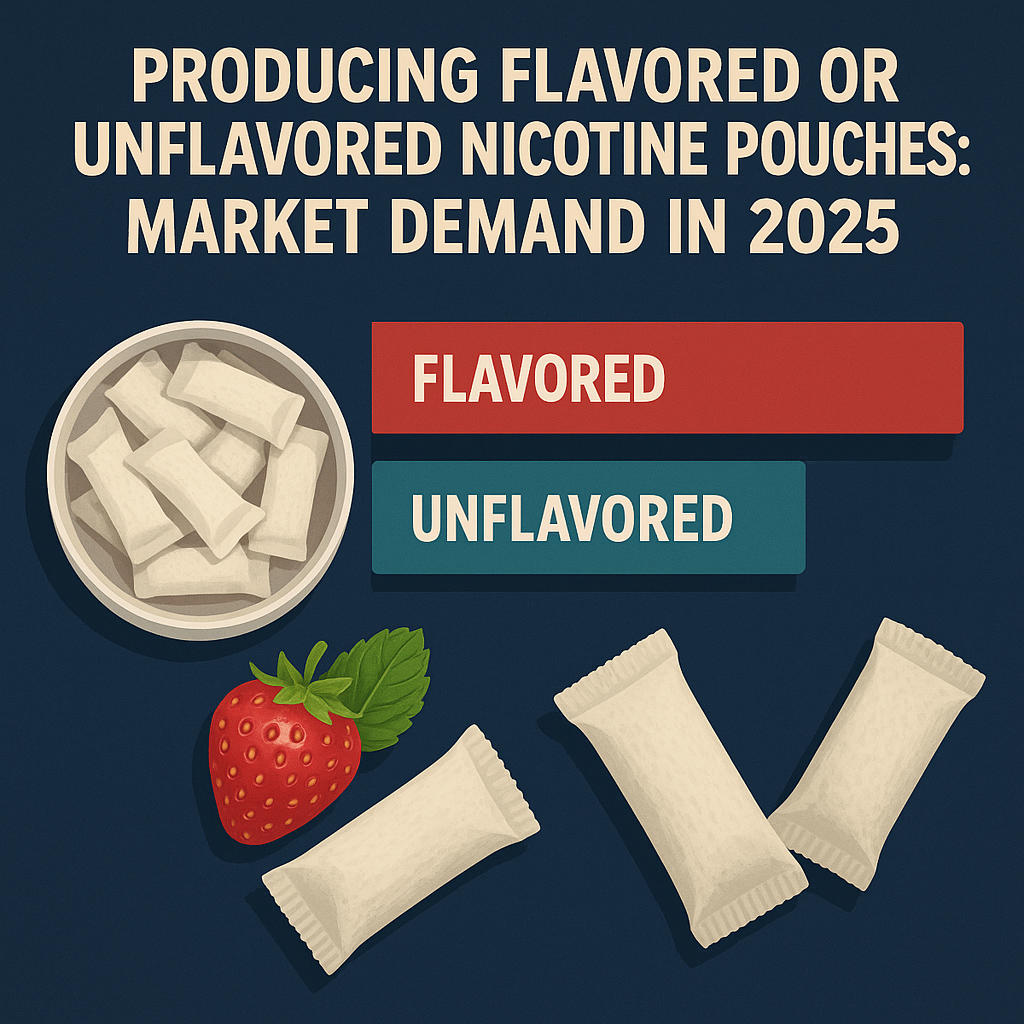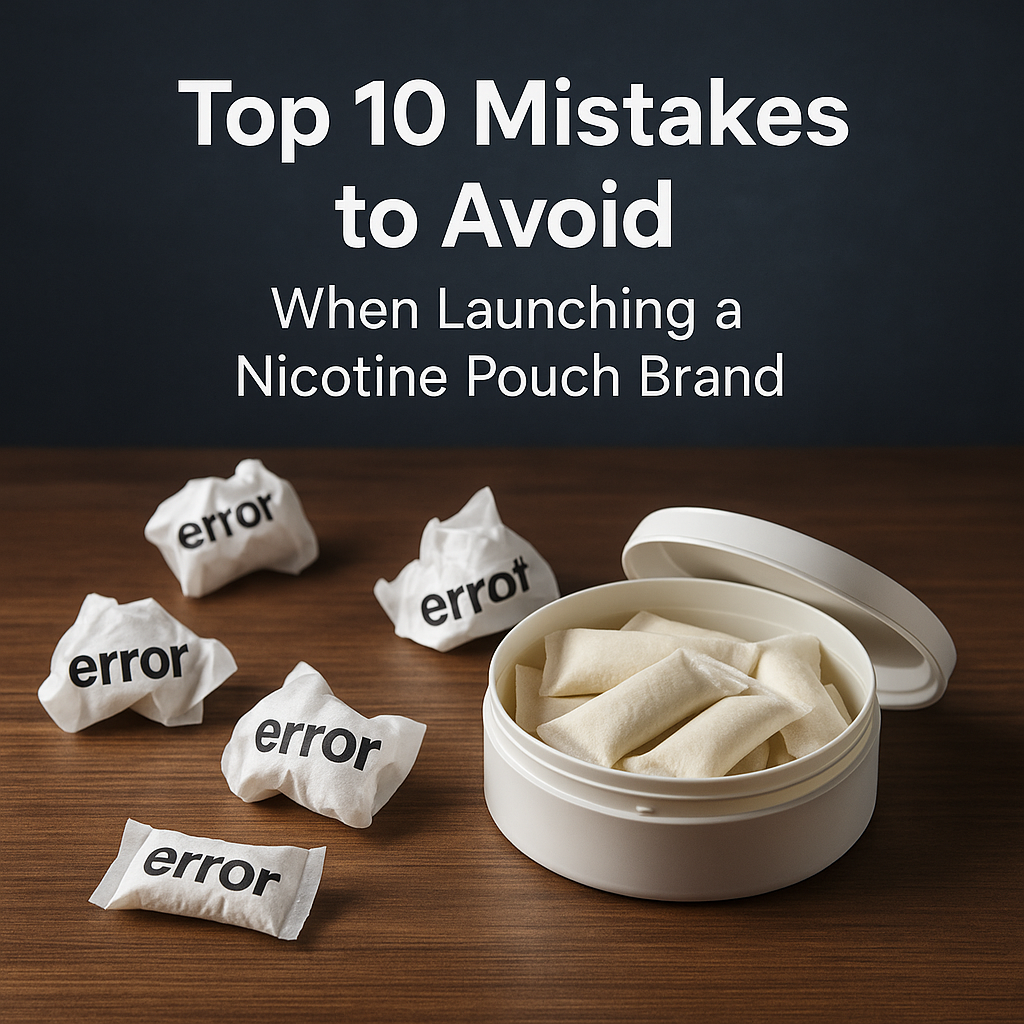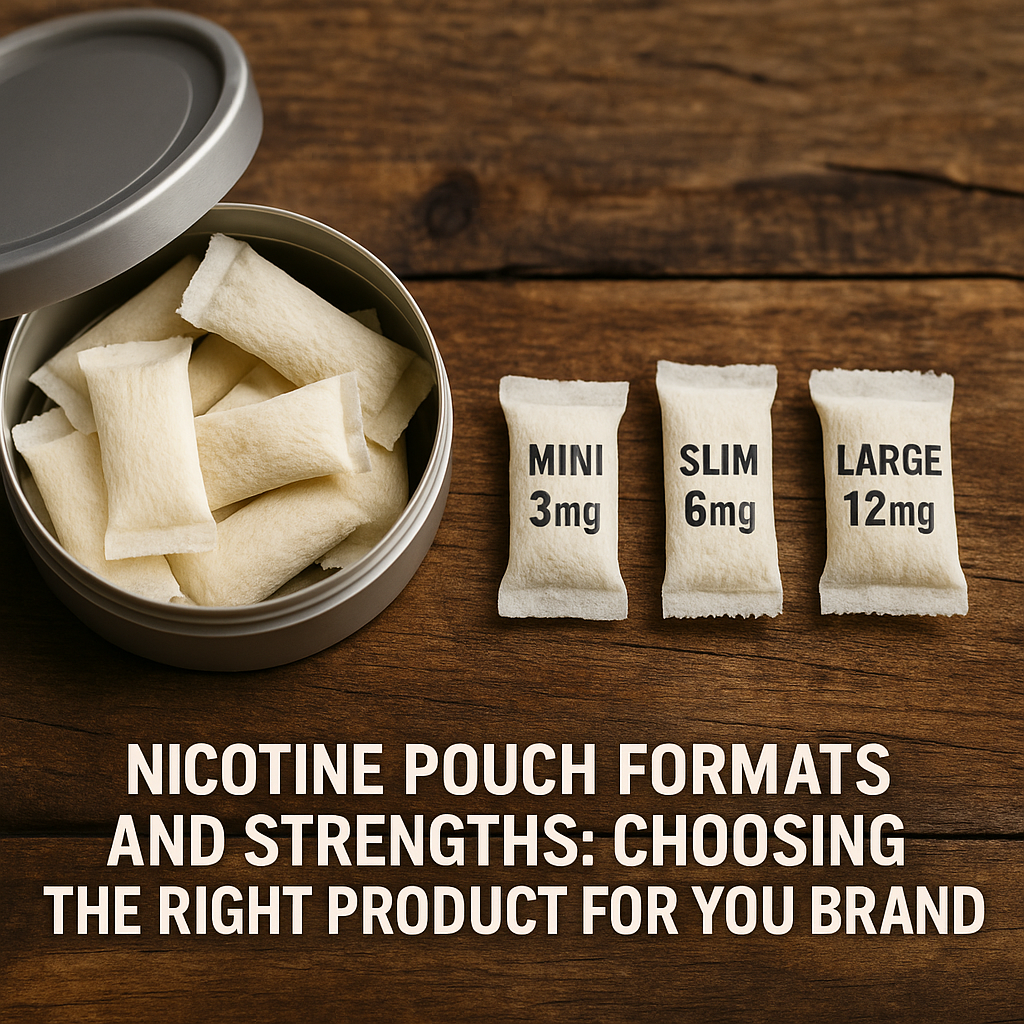Ever catch yourself wondering what goes into those little nicotine pouches? You know, the ones quickly becoming a go-to alternative to cigarettes? I sure have.
If you’re like me, you’re probably curious about how something so small can pack such a punch. Well, get ready to dive behind the scenes as we uncover the journey of a nicotine pouch, from its raw beginnings to its packaging.
Trust me, it’s not just about mixing a few ingredients together. By 2030, the global nicotine pouch market is projected to reach nearly $23.60 billion, with a staggering compound annual growth rate (CAGR) of 35.7% from its valuation of around $1.99 billion in 2022. This rapid growth shows just how popular these tiny powerhouses have become (Grand View Research) (MAXIMIZE MARKET RESEARCH).
Whether you’ve been using nicotine pouches for a while or you’re simply intrigued by this whole smokeless trend, buckle up. This is your all-access pass to the world of nicotine pouches, and I guarantee you’ll walk away with a newfound appreciation for these tiny marvels.
In this article, we will explore the journey of a nicotine pouch from raw materials to packaging, covering the manufacturing process, quality control, and sustainability practices.
Manufacturing Process

The process of nicotine pouches is a meticulous journey that blends science, precision, and dedication to ensure every pouch delivers a consistent and satisfying experience.
Extraction and Purification
Nicotine Extraction
The journey begins with extracting nicotine from either tobacco plants or synthesizing it in the lab. Traditional methods involve soaking tobacco leaves in water or solvents to draw out the nicotine. In recent years, synthetic nicotine has gained popularity because of its purity and regulatory flexibility.
Purification Process
Once extracted, the nicotine undergoes purification to remove impurities and ensure a consistent, high-quality product. This step is crucial as it directly affects the taste and safety of the final product.
Formulation
Mixing the Nicotine with Fillers
Next, the purified nicotine is mixed with various fillers. Common fillers include microcrystalline cellulose, which helps create the desired texture and consistency. The formulation process also involves adding flavorings and sweeteners to make the pouches more palatable and appealing to consumers.
The Role of Flavorings and Sweeteners
Flavorings play a significant role in the popularity of nicotine pouches. Options range from mint and fruit to coffee and cinnamon. In fact, flavored nicotine pouches held a larger revenue share in 2022, highlighting their importance in attracting users.
Quality Control
Ensuring Consistency
Quality control is integral at every step of the manufacturing process. Companies adhere to rigorous testing protocols to ensure each batch of nicotine pouches meets safety and consistency standards. This includes testing for nicotine content, purity, and the absence of harmful contaminants.
Regulatory Standards
Manufacturers must comply with various regulatory standards, which vary by region. For instance, Europe has stringent controls on tobacco and nicotine products, ensuring high safety standards for consumers (Grand View Research) (MAXIMIZE MARKET RESEARCH).
Equipment Used
Advanced Machinery
The manufacturing process involves sophisticated machinery designed to handle large volumes of production while maintaining precision. This equipment includes mixers, filling machines, and packaging lines that work together to produce the final product efficiently.
Understanding these steps helps you see how much effort goes into making each nicotine pouch a great experience. The manufacturing journey from nicotine extraction to quality control shows the science and dedication behind these popular products.
Packaging

Ensuring the quality and appeal of nicotine pouches relies heavily on effective packaging. This critical step maintains product freshness and safety, enhances user convenience, and addresses environmental concerns.
Types of Packaging
Materials Used
Packaging materials for nicotine pouches vary, with options including plastic cans and biodegradable materials. The materials chosen for packaging affect both the product’s shelf life and its environmental impact. Recently, there has been a growing preference for biodegradable packaging due to increased environmental awareness.
Design Considerations
Designing the packaging involves considering user convenience and product protection. Easy-to-open lids, resealable features, and compact sizes are important for user satisfaction. The packaging must also protect the pouches from moisture and damage during transportation and storage (Research Markets).
Packaging Process
Sealing and Labeling
Sealing and labeling are crucial to ensure product freshness and compliance with regulatory standards. Techniques like vacuum sealing and the use of oxygen-absorbing packets help maintain the integrity of the nicotine pouches. Proper labeling provides essential information such as ingredients, nicotine content, and usage instructions.
Automated Packaging
Advanced machinery is used to automate the packaging process. These machines can fill, seal, and label the pouches quickly and accurately, ensuring consistency and efficiency. Automation also reduces human error and increases production capacity.
Ensuring Product Freshness and Shelf Life
Preservation Methods
To extend the shelf life of nicotine pouches, manufacturers use several preservation techniques. These include vacuum sealing, nitrogen flushing, and the addition of desiccants to control moisture. These methods help keep the pouches fresh for longer periods, ensuring users get a high-quality product every time.
Sustainability in Packaging
Eco-friendly Practices
Sustainability is becoming a major focus in the packaging industry. Manufacturers are increasingly using eco-friendly materials and practices to reduce their carbon footprint. This includes the adoption of biodegradable packaging materials and the implementation of energy-efficient processes in the packaging phase.
Compliance and Regulations
Packaging Standards
Packaging standards for nicotine pouches vary by region. In Europe, stringent regulations ensure that packaging materials and processes meet high safety and environmental standards. In the U.S., the FDA regulates the packaging to ensure consumer safety and product quality. Compliance with these standards is crucial for manufacturers to sell their products in different markets.
Exploring the packaging process reveals the complexity and precision required to deliver a quality nicotine pouch to consumers. From selecting the right materials to ensuring regulatory compliance, every step is meticulously designed to maintain product integrity and meet user expectations.
Quality Assurance
Quality assurance is the backbone of nicotine pouch manufacturing. It ensures that every product is safe, consistent, and effective, giving consumers a reliable experience every time.
Testing and Compliance
Regular Testing Protocols
Manufacturers perform rigorous tests on every batch of nicotine pouches. These tests check for nicotine content, purity, and the absence of harmful contaminants. Regular testing is crucial to ensure that the pouches meet safety and quality standards.
Compliance with International Standards
Meeting regulatory standards is essential for accessing global markets. In Europe, nicotine pouches must comply with stringent safety regulations. In the U.S., the FDA oversees these products to ensure they meet strict guidelines. Compliance with these standards not only ensures safety but also builds consumer trust.
Safety Measures
Product Safety
Ensuring product safety involves verifying ingredient quality and preventing contamination. High-quality raw materials are essential, and manufacturers maintain clean production environments to avoid any contamination. This vigilance ensures that every nicotine pouch is safe for consumers.
Addressing Potential Health Concerns
Manufacturers take steps to address common health concerns by ensuring their products are free from harmful substances and providing clear usage instructions. Continuous monitoring and research help identify and mitigate potential risks, ensuring consumer safety.
Continuous Improvement
Feedback Mechanisms
Consumer feedback is vital for continuous improvement. Manufacturers collect and analyze feedback to make necessary adjustments, ensuring their products meet user expectations and regulatory requirements. This feedback loop helps keep the products relevant and high-quality.
Research and Development
Research and development (R&D) are crucial for innovation. Through R&D, manufacturers can improve formulations, enhance production processes, and introduce new flavors and strengths. This ongoing innovation ensures that nicotine pouches meet diverse consumer preferences and maintain high standards.
Sustainability and Ethical Practices
Sustainable Quality Assurance
Sustainability is becoming integral to quality assurance. Manufacturers are adopting eco-friendly practices, such as using sustainable materials and reducing waste, to minimize their environmental impact. These practices ensure that quality assurance processes are not only effective but also environmentally responsible.
Ethical Manufacturing Practices
Ethical practices are fundamental in manufacturing. Ensuring fair labor practices and ethical sourcing of materials promotes social responsibility. This includes providing safe working conditions, fair wages, and using suppliers who adhere to ethical standards (Research Markets) (Grand View Research).
Every step of the quality assurance process ensures that nicotine pouches are safe, effective, and reliable. Through rigorous testing, compliance with regulations, continuous improvement, and sustainable practices, manufacturers deliver products that meet high standards and consumer expectations.
Conclusion
The meticulous journey of a nicotine pouch ensures safety, effectiveness, and quality at every stage, from raw materials to the final product. Each step, from nicotine extraction and purification to precise formulation and rigorous quality assurance, highlights the industry’s commitment to high standards. Effective packaging, incorporating sustainable practices, further ensures product integrity and consumer satisfaction.
Looking forward, the nicotine pouch market is set for substantial growth, driven by innovations in product and packaging technologies. Anticipated regulatory changes will continue to shape the industry, promoting even higher safety and quality standards. As consumer preferences evolve, manufacturers are dedicated to meeting these demands with advanced, eco-friendly products, ensuring the ongoing success and popularity of nicotine pouches.











